People who follow news in the field of computer technology know very well that in the past few years there has been a tendency to gradually abandon compact discs and, consequently, devices for working with them, in favor of USB drives based on solid-state memory - the so-called flash drives. The advantages of the latter are obvious: small dimensions; high reliability due to the inability to scratch the work surface; ability to rewrite data repeatedly; speed.
Do I need an optical drive modern computer
Despite all of the above, devices for working with CDs are still needed. There is no need to go far for examples: an optical DVD-drive connected to a computer allows you to watch movies and listen to music, which is still distributed on compact discs, not flash drives; perform the installation operating system on those machines that do not correctly support work with USB-drives; to create a home collection of applications - after all, not everyone will be able to simply “get out of the hat” funds for an additional hard drive, etc. Therefore optical drive is needed. Especially when you consider that the lower limit of the cost of these devices is now less than one thousand rubles.
Existing modifications
According to the design, there are two types of these devices: external, intended for installation outside the case of the system unit, and internal. Data exchange in the first case is carried out through the universal serial bus USB cable, and electrical power is supplied through another free computer port or from its own unit. An external optical drive costs at least 1,800 rubles. Such a performance can be truly indispensable for owners of netbooks, in which the device for working with CDs is missing.
Also the demand for external drives Partly formed by users of old laptops, whose own DVD has developed its resource, and new models with a parallel interface are not released.

In the second case, the optical drive is fixed inside the case, and switching takes place via the SATA bus (PATA). The cost is almost two times lower than that of the “external brethren”, and the quality is often higher. Owners personal computers you should not hesitate with the choice: models for indoor installation are preferable in all respects.
Interfaces
Before you go to the store to buy an optical drive, be sure to determine the type of interface supported by the motherboard. This can be done in several ways: look in the instructions, on the manufacturer's website, in diagnostic programs or by direct inspection. To connect the drives, a parallel IDE (PATA) interface can be used, the cable of which is quite wide and consists of 40 (80) conductors. The connectors and cable of the replaced serial SATA are more compact. They can not be confused: either by name or by appearance. Having defined the supported type, you can go shopping. Note that there were transitional models of motherboards that could work with both PATA and SATA. In this case, serial drive options are preferred.

Of course, it’s not only external differences. SATA supports data transfer rates from 1.5 Gbps (version 1) to 6 Gbps (third generation). For comparison: the last modification of the IDE allowed transferring no more than 150 Mb / s. There was a potential for growth, but other factors pushed the standard change. Let's make a reservation that all modern drives work at the same speeds determined by the standards of reading / writing disks.
Compact fee
The dignity of laptops in their small size and convenience of work, because everything, in the most direct sense, is at hand. However, if something fails, the owner is faced with serious problems associated with finding suitable components. For example, most likely, it will not be possible to come to the store and immediately buy an optical drive for a laptop, as manufacturers adhere to their internal standards. Some disc ejection tray all-wheel drive, the other only the cover is removed from the latch. But more importantly, the shape and dimensions are different. Therefore, even if you can choose a similar model for power and interface, it does not guarantee that the installation of an optical drive will be physically possible. Ideal - a device from the same manufacturer, whose products have been used before. In difficult cases, when it is not possible to pick up a replacement, you can purchase an external optical drive for a laptop connected via USB. In other words, if you need to replace the device, then for 100% compatibility it is recommended to take the entire laptop with you and check on the spot. In the "world" there is no such problem.
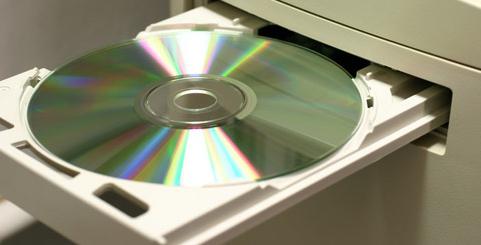
Supported drives
Now there are several standards for CDs: classic CDs with a capacity of up to 700 MB; popular 4.7GB DVDs; as well as the relatively new Blu-Ray, free to accommodate 50 GB. Accordingly, appropriate devices are offered for reading and writing them. The peculiarity is that most manufacturers comply with top-down compatibility. That is, the DVD-drive can fully work with CDs, and the Blu-Ray device supports two additional formats. Although, in the latter case, there are exceptions, so when choosing you need to carefully read the instructions. The cost of the internal drive for the new type of disks is at least 3 thousand. That is almost three times more than for DVD. But the external optical drive Blu-Ray costs about six thousand rubles.
What to choose
If there are “extra” means, the output is unambiguous: you need to buy a drive that can work with CDs of the CD, DVD (all modifications) and Blu-Ray standards. In the case of internal installation in the case of a personal computer, problems usually do not arise, since the approved dimensions are respected by all manufacturers. Interface and power is also standardized. If you want to save money, you can choose any new model of DVD-RW device. But CD drives are not worth buying, even at bargain prices - the 700 MB disk space is now too small for most applications.

With laptops it is more difficult: a direct replacement of the “native” device with a more advanced one is not always possible, since the system BIOS must maintain the desired standard. That is, to remove the DVD and put Blu-Ray, most likely, will not work, although there are exceptions.
How to perform a replacement
If we are talking about personal computers, it is necessary to de-energize the system, remove the side cover of the case, remove the drive from the latches, disconnect the power and interface loops from it, and remove. Installing a new occurs in reverse order. No settings required.
In laptops, dismantling methods are different. Most often you have to open the tray and de-energize the system. Then remove the front cover of the drive, unscrew the retaining screws and remove the device on the slide. Installing a new one is possible with full identity of the dimensions and locations of the connectors.
An optical DVD-drive allows you to watch movies and listen to music on CDs, to install the operating system. Everyone knows that a good optical device must be installed on a personal computer to read various kinds of disks. It allows you to copy information to a PC at high speed, as well as to record all the information you need on optical media. If you are reading this article, it means that you are thinking about how to choose the right optical drive for your personal computer. This is what will be discussed further.
Types
Many people believe that installing a good optical drive in modern reality is not at all a necessity. People are used to using flash drives for almost all purposes. In fact, there are a number of useful options for good optical devices.
Most modern models DVD-RW drives allow you to read and burn DVDs and CDs. Some versions of devices are equipped with special equipment that allows you to put on the back of any labels or images.
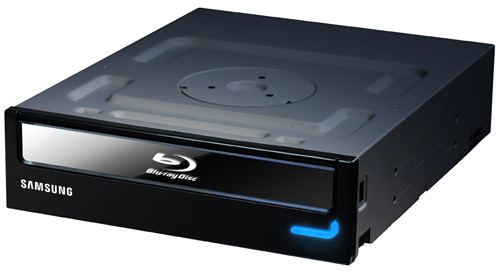
And the best optical drives allow you to read video from licensed drives Format - Blu-Ray, or use these discs to record a large amount of information. This technology is still evolving today. Its advantage is that such disks can contain up to hundreds of gigabytes of data. However, the cost of the carriers themselves is still quite high, so the technology is developing not by the most extensive steps. The vast majority of Blu-Ray devices can read DVDs and CDs, but they cost on average twice as expensive.
Disk read and write speed
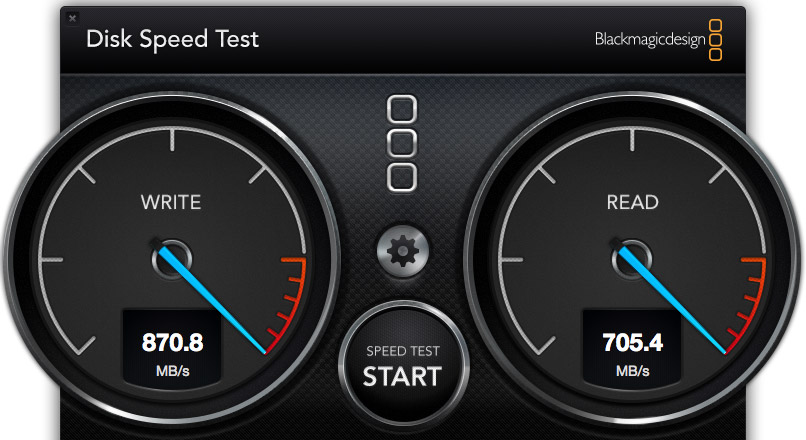
Be sure to buy when you need to pay attention to the speed of reading and writing optical drive. From this directly depends on the speed of the device with different disks. It should be noted that there is no sense in chasing ultra-high speeds, as this can lead to a constant overheating of the system. For example, the optimal reading speed for CDs is 48x. This wave is enough. With an increase in speed characteristics, the noise produced by the drive increases significantly. In addition, overheating can cause a fairly rapid failure of the equipment. DVD-R and DVD + R discs that can be recorded only once have speed limits. It can be characterized by parameters - 1x, 2x, 4x or 8x.
Versatility
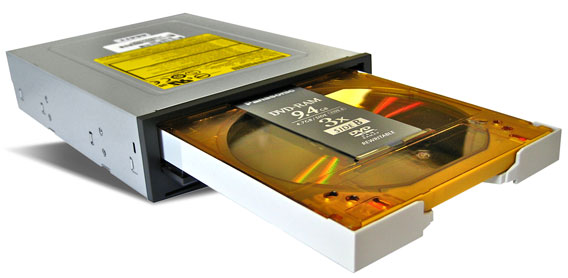
There are models that allow you to simultaneously record and read information. These discs are called DVD-RAM. Until recently, the most advanced technology was the production of double-layer discs. She allowed to significantly expand the marginal volumes. If you want to choose the really best optical drive, then focus on its versatility in terms of reading and writing information to various media. It should work without any problems with all the types of disks described above.
Interface

It is very important to choose the right interface of the device through which it will connect to a personal computer. Today there are two main types of them. The first is the IDE standard. This technology was used decades ago. Of course, there is an alternative connection method, namely the SATA interface. The second option is considered the most efficient data transfer method. Data transfer with this type of connector is ten or more times faster than that of the IDE interface. It is the connector - SATA is used today by manufacturers and owners of PCs in most cases. If the model has only an IDE connector, then bypass it. This technology is gradually becoming a thing of the past, making the road more modern and faster. Manufacturers of modern reliable optical drives mainly use SATA as the main interface for connecting to a personal computer.
Build quality
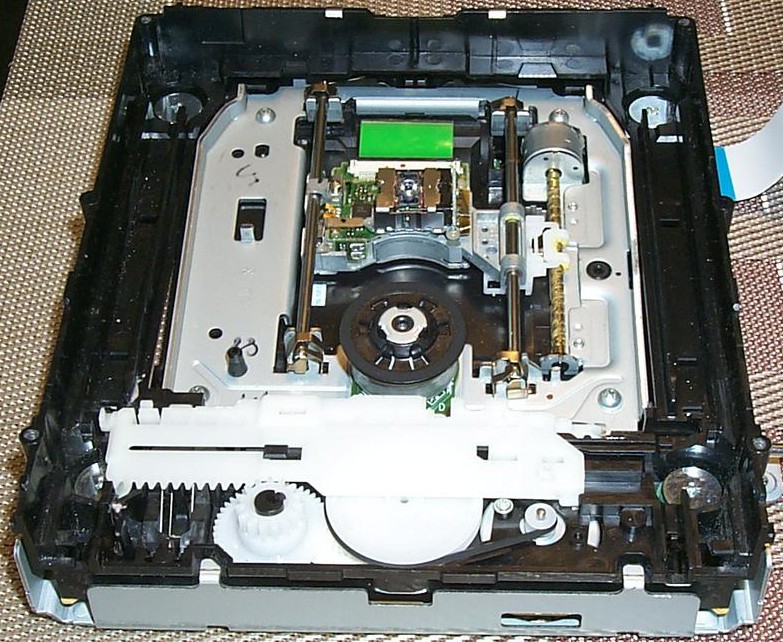
When buying, be sure to pay attention to the build quality of the device. A good device will be made of quality materials. As a rule, the body is made of metal. On the front of its panel may be present and plastic, but in small quantities. The thickness of the metal must be large enough so that in case of an accidental fall the apparatus is not damaged on a hard surface. In terms of price-quality optical drives, which are manufactured in Europe, have gone far ahead of all their competitors.
Laptop Optical Drives
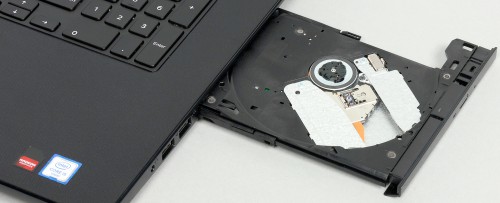
An optical internal DVD drive for a laptop is smaller and thinner than a device for a desktop computer. At the same time, with half the price, it exceeds the external one in all respects.
External dvd drive

HE is designed for a laptop with no optical device. It connects to the laptop via USB cable, and is more expensive than the internal one. This form factor model is necessary for connecting to laptops that do not have this device. In addition, the external owners buy it with old laptops, the video drive in which has exhausted the resource, and it is impossible to replace it because there are no models with the right connectors available.
M-Disc recording support

M-DISC technology developed by Millenniata from the USA. The developers claim. that discs made with this technology can store information for up to 1000 years. Wheels - M-DISC, thanks to the use of inorganic material resistant to light, temperature and humidity. DVD M-DISC has a volume of 4.7 GB. The company promises to produce and M-DISC Blu-ray-discs, the volume of which will be - 25 GB. M-DISC Blu-ray-discs can be read on standard Blu-ray-devices, whereas for recording a regular M-DISC-disc a special optical recorder with a logo - M-READY is required.
Manufacturers
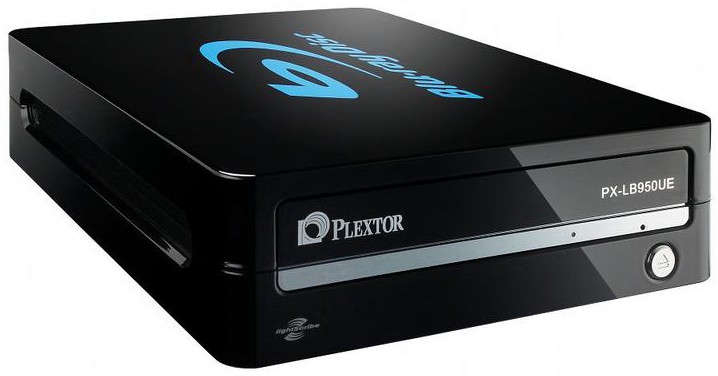
Let's talk a little about the manufacturers of expensive and low cost optical drives. We recommend purchasing devices manufactured by those companies that have been on the market for many years. The undisputed leader of the top category is the company Plextor. These optical devices are a guarantee of quality and durability. A little in terms of the popularity of this firm gives the firm NEC. It also produces high-quality copies of the modern market. They can also pay attention to when buying. In terms of price-quality optical device from this company goes far from its competitors. Quite high-quality models are produced and companies - Samsung, LG, and ASUS. Buy a budget optical drive offer firms BENQ and Sony.
Ranking of the best optical drives in 2016
We bring to your attention a rating of 7 optical drive drives of various form factors that deserve attention, the average price category recognized as the best at the beginning of 2016. The rating is based on expert reviews and reviews of device owners.
Toshiba Samsung Storage Technology SH-224FB
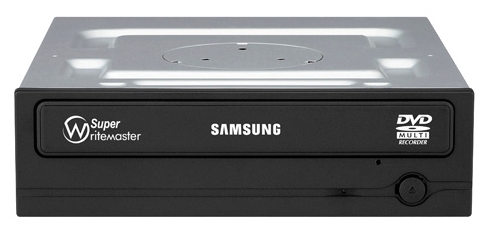
Internal DVD RW DL Drive for Desktop - Toshiba Samsung Storage Technology SH-224FB has an automatic tray for loading discs. The device with the connection interface is SATA, supports recording of discs of the format DVD-RAM, and also has 0.5 MB of buffer space. Maximum recording speed: CD-R - 48x, CD-RW - 24x, DVD-R - 24x, DVD-R DL - 8x, DVD-RW - 6x, DVD + R - 24x, DVD + R DL - 8x, DVD + RW - 8x DVD - 16x, CD - 170 ms, DVD - 150 ms The easy-to-install device has a width of 148 mm, a thickness of 42 mm, and a depth of 170 mm. A very reliable device is distinguished by a quick start of the recording process. The recording itself runs at a high speed, supplemented by technology - Samsung WriteMaster, with which the model automatically determines the type of disk. and selects the desired write speed. The DVD device is characterized by low power consumption and low heat dissipation.
ASUS DRW-24F1MT

Internal DVD RW DL drive for desktop - ASUS DRW-24F1MT has an automatic tray for loading discs. The device with the connection interface is SATA, supports recording of discs of the format DVD-RAM, and also has 0.5 MB of buffer space. Maximum recording speed: CD-R - 48x, CD-RW - 24x, DVD-R - 24x, DVD-R DL - 8x, DVD-RW - 6x, DVD + R - 24x, DVD + R DL - 8x, DVD + RW - 8x 5x. Read speed: CD - 48x, DVD - 16x, CD - 125 ms, DVD - 145 ms Easy to install, has a width of 146 mm, a thickness of 41 mm and a depth of 170 mm.
LG GH24NSD0
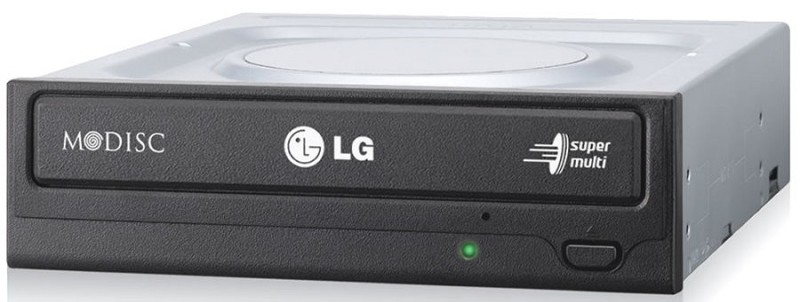
Internal DVD RW DL drive for desktop computer - LG GH24NSD0 has an automatic tray for loading discs. The device with a connection interface - SATA, supports the recording of discs of format - DVD-RAM, and also has 0.75 MB of buffer capacity. Maximum recording speed: CD-R - 48x, CD-RW - 24x, DVD-R - 24x, DVD-R DL - 8x, DVD-RW - 6x, DVD + R - 24x, DVD + R DL - 8x, DVD + RW - 8x 5x. Read speed: CD - 48x, DVD - 16x, CD - 125 ms, DVD - 220 ms The unit is easy to install and has a width of 146 mm, a thickness of 41 mm and a depth of 165 mm. Reliable device has the ability to record discs of the type - M-Disc, which due to the use of inorganic materials are resistant to light, temperature and humidity.
ASUS BW-16D1HT

High-quality internal BD-RE drive for the desktop computer - ASUS BW-16D1HT has the ability to write to dual-layer discs - Blu-ray. In addition, the multi-format device works with the format - BDXL, is compatible with media - M-Disc, and supports the rewriting technology - DVD-RAM. The device has an automatic disc loading tray, and a SATA connector for connecting to motherboard. Maximum recording speed: CD-R - 48x, CD-RW - 24x, DVD-R - 16 x, DVD-R DL - 8x, DVD-RW - 6x, DVD + R - 16 x, DVD + R DL - 8x, DVD + RW - 8x, 5x BD-R - 16x, BD-R DL - 12x, BD-RE - 2x BD-RE DL - 2x.Read speed: CD - 48x, DVD - 16x, CD - 150 ms, DVD - 160 ms, BD - 180 ms. Before burning a disc, the ASUS BW-16D1HT tests the disc, determining optimal settings to achieve maximum quality. The E-Green technology installed in the device, if you stop using the device, automatically puts it into sleep mode with reduced power consumption. Convenient graphical interface is an icon on which you want to drag the cursor files to write. Recorded data can be protected with a password using a special encryption function.
HP F2B56AA
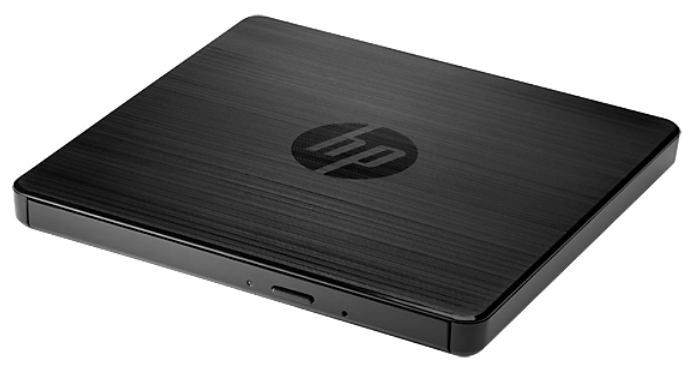
Slim and lightweight external optical drive - HP F2B56AA type - DVD RW D has a semi-automatic disc loading tray. The device reads CDs with maximum speed - 24x, but DVD discs - 8x. The model has a width - 144 mm, height - 14 mm. and depth - 138 mm. It is very convenient to take it with you anywhere along with your laptop. The device is connected to a computer or laptop via USB 2.0 or USB 3.0 slot. The device works with disc formats - CD-R, CD-RW, DVD + R, DVD + RW, and DVD-RAM. External optical device with recording function is almost silent in operation.
ASUS SDRW-08D2S-U LITE
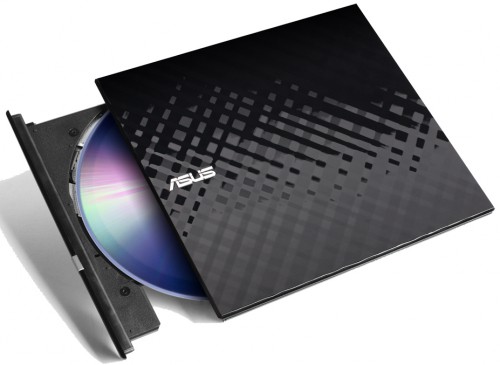
A beautiful and lightweight external optical drive - ASUS SDRW-08D2S-U LITE is very quiet in operation. The device is easily recognized by the "BIOS" of a computer and laptop, it has rubber feet and a convenient button - Eject. Model type - DVD RW DL is connected to the motherboard via a USB 2.0 connector, and is equipped with a semi-automatic disc loading tray. Maximum recording speed: CD-R - 24 x, CD-RW - 16 x, DVD-R - 8 x, DVD-R DL - 6 x, DVD-RW - 6x, DVD + R - 8 x, DVD + R DL - 6 x, DVD + RW - 8x DVD - 8 x, CD - 140 ms, DVD - 160 ms With a weight of 280 g, the device has a width of 142 mm, a height of 20 mm and a depth of 142 mm. Thanks to its compactness and attractive appearance, it is very convenient to take the device with you anywhere with your laptop.
Toshiba Samsung Storage Technology SN-208FB

High-quality internal DVD RW DL, slim-drive for a laptop - Toshiba Samsung Storage Technology SN-208FB has a buffer size of 1 MB. The device supports technology - DVD-RAM, has a semi-automatic tray for loading disks, and a connector - SATA for connecting to a laptop. Maximum recording speed: CD-R - 24 x, CD-RW - 24 x, DVD-R - 8 x, DVD-R DL - 6 x, DVD-RW - 6x, DVD + R - 8 x, DVD + R DL - 6 x, DVD + RW - 8x 5x. Read speed: CD - 24 x, DVD - 8 x, CD - 150 ms, DVD - 150 ms With a weight of 150 g, the device has a width of 128 mm, a height of 13 mm and a depth of 127 mm. Thanks to its compactness and attractive appearance, it is very convenient to take the device with you anywhere with your laptop.
Conclusion
That is where our article came to its logical conclusion. Now each of you knows how to choose a good optical drive for your personal computer or laptop. There is nothing difficult in this, the most important thing is to take into account the most important parameters that were noted above. Despite the development of digital data storage technology, optical devices will be relevant for a long time due to the huge number of optical discs that are in our home, with our friends and acquaintances. After all, these discs can be valuable, unique records. Yes, and install Windows from the disk is very convenient. In general - a good optical drive will not hurt.
An optical drive is an electrical device for reading and writing information from optical media (CD-ROM, DVD-ROM, etc.).
There are the following types of optical drives: CD-ROM, CD-RW, DVD-ROM, DVD / CD-RW, DVD RW, DVD RW DL, BD-RE, HD DVD-ROM, HD DVD / DVD RW, HD DVD-R HD DVD-RW.
- CD-ROM is the simplest version of the optical drive, designed for read-only CDs.
- CD-RW - in addition to reading CDs, they are capable of recording on CD-R (RW) media.
- DVD-ROM is a drive designed for reading CDs and DVDs only.
- DVD / CD-RW - a combo drive, in addition to reading CDs and DVDs, is capable of recording on CD-R (RW).
- DVD RW is an optical drive designed for reading compact and DVD discs, as well as for recording on CD-R (RW) and DVD R (RW) media. By the type of the reflective layer, DVD R (RW) media is divided into DVD + R (RW) and DVD-R (RW). DVD + R (RW) discs, compared with the negative ones, support higher recording speeds. However, DVD-R (RW) discs have better compatibility with home DVD players.
- A DVD RW DL drive, unlike a DVD RW, is also capable of recording to dual layer DVDs (DL). Dual-layer discs are different from the usual larger capacity.
- BD-RE is a drive capable of reading and recording on BD (Blu-Ray) discs. The BD-RE drive supports all possible BD discs: BD-ROM (read-only), BD-R (write-once), BD-RE (rewritable).
- HD DVD-ROM can read HD DVD discs.
- HD DVD is a new generation of optical discs designed primarily for storing high definition movies (HDTV). The new media format allows you to record three times more data than DVD. Single-layer HD DVDs have a capacity of 15 GB, dual-layer - 30 GB. As a rule, HD DVD-drive can read all formats of DVD and CD-ROM drives.
- HD DVD / DVD RW can read HD DVD format discs, as well as record on discs such as DVD-R, DVD + R, DVD-RW, DVD + RW, CD-R, CD-RW.
- The HD DVD-R drive is used to burn HD DVD-R discs that are write-once. In addition, he can usually burn and read CDs / DVDs.
- HD DVD-RW is used to burn HD DVD-RW discs that can be recorded multiple times. In addition, he can usually write and read HD DVD-R discs and CD / DVDs.
Disc loading methods
Semi-automatic tray - after pressing the "Eject" button, the disc tray is unlocked, it is snapped off by a spring, further extension and subsequent loading is carried out manually. The automatic tray is found on desktop drives. The loading and unloading of the disc tray is done automatically using the built-in micromotor. With the slotted mechanism, there is no tray, approximately half of the disk is inserted into the slot on the front panel, then it is loaded automatically.
Types of drive placement
- internal drives are mounted inside the system unit. Usually, there are full-size (for compartments 5.25 "of the system unit) and slim (for laptops).
- external drives are located outside the system boot, and are designed mainly for laptops, are connected to USB connectors.
The zone of application for optical drives is not only computers we are used to, but also car receivers we use, DVD players, some types of optical discs use tape recorders. Even with all this, many people question the need for such devices to read optical discs. But in order to know how correct a given statement is, you must first know what an optical drive is and what capabilities it has.
The period of development of the drive for reading optical discs has more than one generation. His work is based on a laser beam that is precisely directed on a reflecting disk layer. This is necessary just for reading information from the recesses, visible only under a microscope on optical disks, for the recognition of information from which it is needed. Therefore, such media as optical discs are often called laser.
The optical reader is attributed not only to the hardware of the computer, but also to the multimedia one, but all because the prevailing information stored on the disks is multimedia directed.
What is an optical drive
Optical drive, what is it for? Regardless of the fact that this device has long been used by people, not everyone knows what kind of drive it is. We proceed to the decoding of the existing term.
An optical disc drive or optical drive is a device that combines both mechanical and electronic components, all of whose work is based on the use of a laser, its function is to read information from optical discs, while some representatives also have the ability to write data.
To refer to an optical disc drive, synonyms are often used, they can be called an optical drive, just a drive, a drive, and sometimes you can hear its less common names. The term drive, like many other terms related to computers, is derived from English. Disk Drive (Disk Drive), which means, with a rough formulation - sets in motion, and it spins, as it was said earlier, the disks. The optical drive is not the only representative of disk drive devices, but the only one used to this day in current computer configurations.
What does a standard optical drive look like?
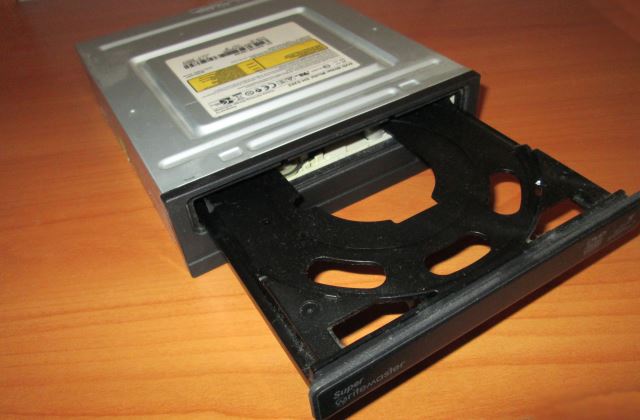
Optical drives are not at all monotonous, which can be indicated by the presence of their representatives not only in ordinary system block with the usual size, but also thinner in a monoblock or laptop, besides the drive can be portable.
The main interfaces for connecting to a computer are SATA and USB; to older computers, such drives are connected using IDE cables. There are other ways to connect a drive to a computer, but they are not popular.
Portable, it is also external, usually with a USB drive connection interface, suitable for those who like to use the disk, even if such a possibility is not provided in the device. In addition, such optical drives can be used on several personal computers, which is also convenient.
There are quite a few different modifications of drives, for example, with a tray, usually controlled by a button, either at the program level or with an insertion hole with the ability to automatically pick up a disc. You should pay attention to a small hole, usually located next to the tray eject button, which will help to remove the disk from the drive by immersing a needle into it and thus activating the eject mechanism, which is important when the computer is off or when the mechanism is jammed. There is nothing strange, as long as a perfect technical solution most likely does not exist.
Types of optical drives and their functionality:
An important functional feature of an optical drive is determined by its type, which characterizes the work with the drive used in the future, and with it the possible disk capacities, write speeds to and from it. For a more complete understanding of what an optical drive is, and how it has functional diversity, consider the possibilities of each type.
CD drives
CD - drive is considered the most common device for reading optical discs, it is divided into:
CD-ROM - a device for reading CDs.
CD-RW - the same as CD-ROM has the ability to read information from a disk, but in addition to reading such devices can produce and write.
DVD drives
DVD - the main function of such optical drives is to use DVD discs:
DVD-ROM - can only read information, DVD-RW performs both reading and recording, but here you need to pay attention to the fact that DVD drives can perform reading and writing operations from CD media.
Such a drive as DVD - RW DL, performs all the function of previous DVD drives with a small bonus, which is the ability to write to dual-layer discs with greater capacity.
Among DVD devices, there is one exception to which the DVD / CD-RW combo drive belongs, which, apart from reading all CD and DVD formats, can only write to CDs.
Blu-ray drive
BD-RE is an optical drive designed to read information from Blu-Ray discs with a layer size of 23.3 GB. Its work in comparison with DVD devices is based on a shorter wavelength of the laser and a blue emission spectrum, as well as an increased protective layer of the disks. This layer provides high reliability when reading and writing.
Blu-ray technology is mainly used for storing high-definition video on such discs and, along with the previous types of drives, has the ability to use CD and DVD.
HD DVD drive
There are also such types of drives as HD DVD, for reading information from all types of discs except Blu-Ray and its more advanced relative HD DVD / DVDRW, which not only reads but also writes. The main functionality of the device is represented by reading HD DVD discs and reading and writing in the case of HD DVD / DVDRW. Single-layer discs have a capacity of 15 gigabytes, and dual-layer discs are 2 times larger.
The value of an optical disc drive in a modern computer
If the average computer, the mid-90s, well, just could not exist without such a device as optical drive, now it is not quite so. Although such a reader can expand the capabilities of a personal computer, it is impossible to call it included in the mandatory configuration of a computer.
The popularity of drives began to fall sharply with the introduction of other sources of information to the masses: such as flash memory, which takes up much less space in your pocket and at the same time every year, increased its space for placing information and probably the most popular way to get something. Internet and the development of piracy in it has become a computer. Why buy something, if it is much more convenient to download on the Internet and bring it to a friend on a flash drive.
Distributing software, music films, and other variety on discs is far from the only way to distribute these information products. Even if you exclude piracy on the Internet, almost everything can be purchased in online stores and stored, say, on a hard disk, and not on an optical one.
For some people, the use of disks is a matter of habit, for someone it is the ability to use the information previously stored on them, someone in the car can not read from USB drives, but in turn copes with reading MP3 discs which already accumulated a huge collection. Of course, it is too early to throw such devices away if they are still needed.
Many people are more accustomed to buy a collection game edition or a music album on optical disk with beautiful packaging for your collection. Someone has preserved old, but not forgotten photos, video shooting from the wedding, and it is not always clear where the information will last longer.
For example, when assembling a computer, not everyone has the opportunity to download drivers from the official website, but if you have a drive in the kit, then it will no doubt help in this situation, the equipment manufacturers complete their technical products with software on the disk.
Summing up the article: what an optical drive and a disk drive are, it becomes clear that it is still too early to discard such devices. Those who do not know about them, rather, do not need to start using, because they already did without them before. Those who know the value of the drives themselves do not get rid of them soon. Here for everyone their own version will be the best, and new formats of such devices are presented with new features.
Faced with such a problem when the Internet for some reason is missing? In such a situation, there is no possibility to download any movie or computer game, and even important software pull off the expanses of the global network you will not work. What to do in this situation? The exit, of course, is, you can always use the drive. But what if the device is broken or missing?
This article will help you find out which optical drive to choose for your computer and clearly demonstrate the main selection criteria.
Optical drive
First you need to figure out what is at stake. An optical drive is a device that allows you to read and write CDs and DVDs. Optical drives can be classified into two types: internal and external. Let's talk about each of them in more detail.
DVD-RW
Most modern models allow you to work with reading and writing to CD and DVD-discs. There are options for devices that allow you to put on the body of a variety of labels and images.
Blu ray
Blu-ray-drive is the most popular and high-quality device for reading and writing. Playing a movie in FULL HD using such a disk drive is easy for Blu-Ray. The technology of blue has a huge development and even now it does not stand still. But for the progress will have to fork out, because the cost of such devices is almost two times more than the previous ones.
External dvd drive
Such drives are very popular among owners of laptops who do not have their own drive. Most often they are connected using a USB cable and are more expensive than internal ones. Such a device is easy to move, because the dimensions allow you to safely carry it with you. The body of such devices are usually made of plastic.
Interior
The speaking name suggests that such devices are installed directly into the computer itself. Any basic desktop computer assembly implies the presence of this device. But everything has a shelf life, right? How to choose an optical drive for a computer? Now we will talk about the most important parameters of such devices, the characteristics of which are applicable to external drives.
Speed
Each drive has its own read and write speed. Obviously, large read and write speeds are an important selection criterion.
Important! If you are interested in the pursuit of speed, be prepared for the fact that the system will overheat. The most "powerful" devices should work together with good cooling.
The most optimal speed for reading CDs is 48x. This speed will be quite enough. DVD-R and DVD + R can record only once and have standard speed limits: 1x, 2x, 4x, 8x.
Multifunctionality
Some devices, such as DVD-RAM, can both read and write information. If you are still looking for a new drive, choose the one that can easily work with all types of disks.
Previously, the most advanced technology was manufacturing double-layer discs. This method of manufacturing helped to expand marginal volumes.

Interface
Another important parameter is the interface. Through the interface the device itself is connected to the computer. Two types of interface are mainly used:
- IDE standard. This technology has been going on for several decades and humanity has long since switched to using the second type.
- SATA. The data transfer rate is ten times faster than the IDE. Such drives are used by all owners of computers and each manufacturer equips its product with this interface.
Workmanship
Let's step aside a little from technical characteristics and talk about such a simple thing as the quality of assembly materials. Choosing a drive, you need to give preference to metal and durable materials that can save the device from mechanical damage of various kinds. European manufacturers have long gone ahead in this regard. Rarely find a European drive, which stints at the assembly stage.
Important! Material is not the main criterion for selection, but treat the product with attention.
Dimensions
Where do without compactness? Progress does not stand still and devices make smaller and smaller sizes. But if you decide to buy a device, you should first familiarize yourself with the size of the connector for the device in your system unit, if the choice, of course, did not fall on an external drive.
Laptop Drives
They differ only in size from those drives that are designed for stationary personal computers. They are relatively small, with the same technical characteristics. But what to do, if in a laptop there is no place for such a device? How to choose an external drive for a laptop in this case? Everything is very simple. You can simply purchase an external optical drive. Again, the cost of such a device will be significantly higher, but this is an adequate price for operating comfort.
M-Disc
The developers of this technology claim that such disks can store information for up to a thousand years. Due to the properties of the material, these discs are resistant to temperature, moisture and light. The DVDs of this company have a volume of five gigabytes, but the manufacturer promises to release M-Disc Blu-Ray-disks, the volume of which will reach thirty gigabytes.
No matter how regrettable, but in the world of technology, marketing drives, so you need to pay attention to another important nuance - the manufacturer.
Manufacturers
It is best to look at the optical drive, which produces a company with a good reputation. The years that companies occupy in this niche speak for themselves. It is desirable to give preference to such manufacturers as: Samsung, Lg, ASUS, etc. But everyone understands that such a purchase implies surcharges for the name of the company, for its brand. There are budget options from equally well-known manufacturers: BENQ and SONY.
Important! Do not even consider devices that have just appeared on the market and have no reputation. You risk giving the amount for a poor-quality product.
This seems to be all. Remember that quality technical parameters reading and writing devices directly proportional to its price. You can always “sacrifice” the quality of the material, but never forget about the risks. This article should help you consider the nuances from all sides.






